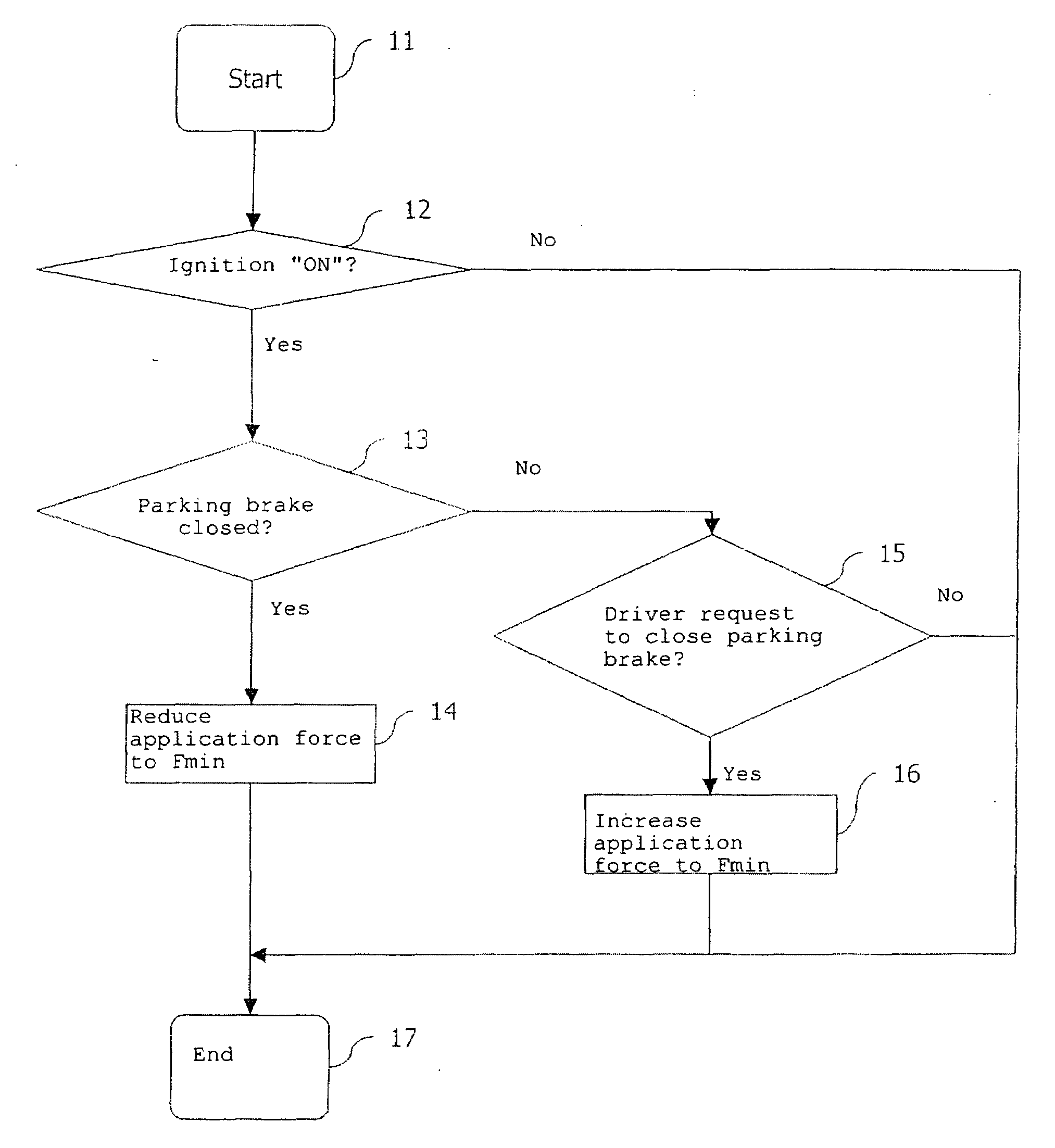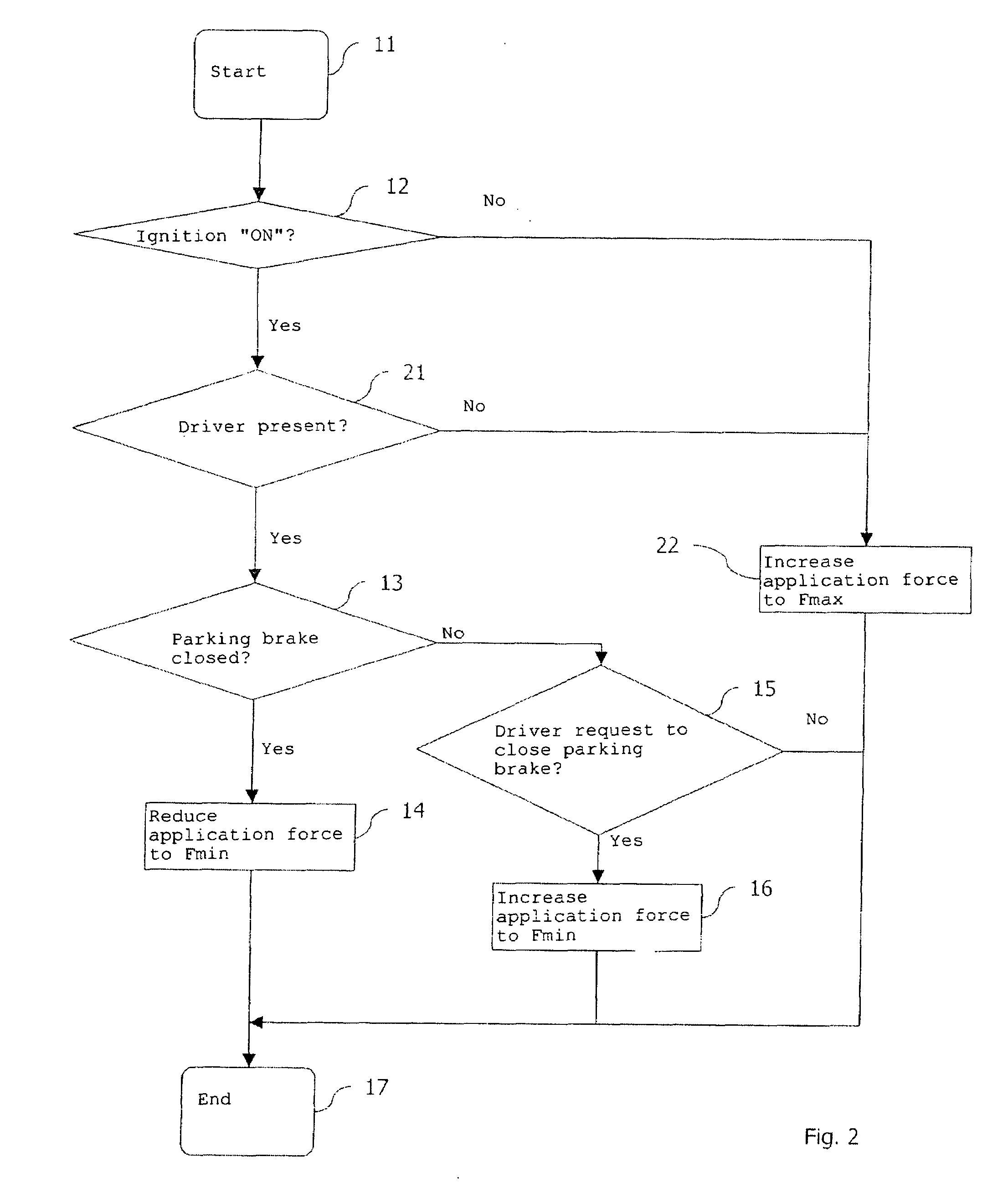Method and system for controlling a motor vehicle parking brake during a stop
a technology for parking brakes and motor vehicles, applied in brake action initiations, brake systems, mechanical devices, etc., can solve the problems of unfavorable unimpeded drive away operation and insufficient release of parking brakes
- Summary
- Abstract
- Description
- Claims
- Application Information
AI Technical Summary
Benefits of technology
Problems solved by technology
Method used
Image
Examples
first embodiment
[0023]The flowchart represented in FIG. 1 diagrammatically illustrates the steps of a method of controlling an electric parking brake according to a
[0024]In a first method step 12 the existence of an ignition signal is detected by means of a suitable sensor such as for example an ignition signal sensor or the like. In a second method step 13 it is checked whether the parking brake is closed (for example whether the parking brake is applied by its maximum value or within a specific maximum value range). This may be established at the actuators of the parking brake by means of a force sensor or a displacement sensor or by means of an engine current increase gradient, spindle displacement determination, the current consumption or the like.
[0025]If it is established in step 13 that the parking brake is closed, in the next method step 14 the application force of the parking brake is reduced to a (possibly inclination-dependent) minimum value and held at this value. This means that the ac...
second embodiment
[0028]The second embodiment differs from the embodiment represented in FIG. 1 in that after step 12 in the method step 21 the presence of the driver is detected. The detection of the driver's presence may be detected by means of an interior camera, by means of seat occupation sensors in the driver seat or the like. If the driver is present in the vehicle, the method continues with step 13. If the driver is not in the vehicle but the ignition is switched on, in a method step 22 the application force of the parking brake is increased to a maximum value and held at this value. In other words, the actuators of the parking brake are closed far enough for the application force of the parking brake to ensure that the vehicle reliably remains in its current position even for extended stationary periods. In this case, the maximum value may also be set or re-adjusted in dependence upon the vehicle inclination.
[0029]In step 21 in an alternative manner an open luggage boot, an open bonnet and / o...
PUM
 Login to View More
Login to View More Abstract
Description
Claims
Application Information
 Login to View More
Login to View More - R&D
- Intellectual Property
- Life Sciences
- Materials
- Tech Scout
- Unparalleled Data Quality
- Higher Quality Content
- 60% Fewer Hallucinations
Browse by: Latest US Patents, China's latest patents, Technical Efficacy Thesaurus, Application Domain, Technology Topic, Popular Technical Reports.
© 2025 PatSnap. All rights reserved.Legal|Privacy policy|Modern Slavery Act Transparency Statement|Sitemap|About US| Contact US: help@patsnap.com



